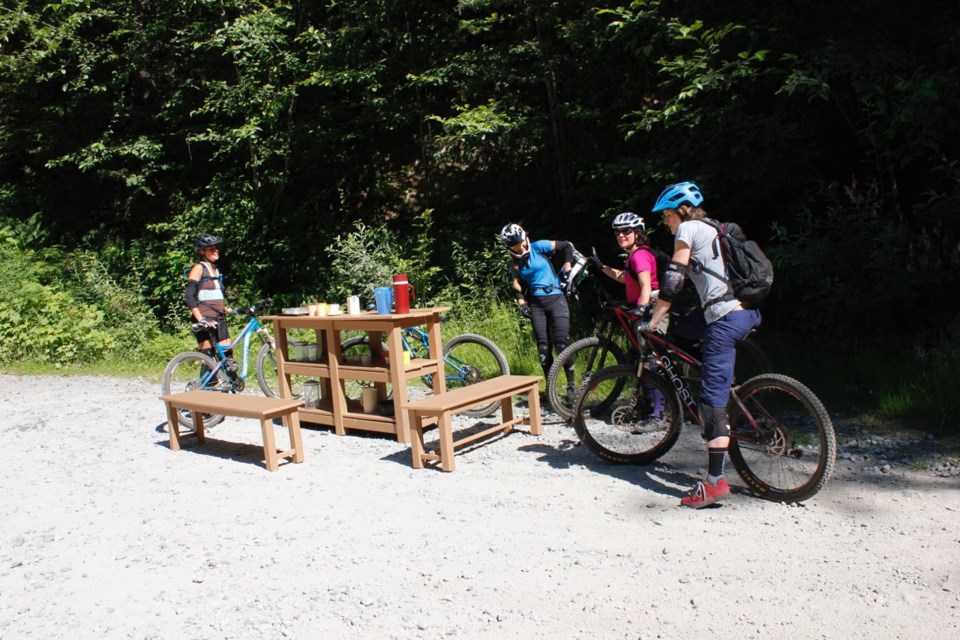Four diverse artists from around the globe came together Saturday night in Squamish to say good-bye and share their experiences after six weeks here.
Vancouver Biennale had brought the four to Quest University as artists in residency.
The artists’ temporary interactive public installations and interventions, created during their stay, were meant to transform perceptions both of Squamish and of public art, according to Barrie Mowatt, founder of Vancouver Biennale.
Some of the artists’ works were set up Saturday along the banks of the Squamish River.
The displays included a cardboard “pop-up” installation by Rathin Barman from India and a photographic intervention by Jonathan Luckhurst from Alberta. A 20-foot high installation of community-donated suitcases by Tammam Azzam, who is in exile from Syria, has been placed near Quest. Kristin McIver of Australia created a natural sounds installation on the banks of the river and installed a neon sign that reads “This Beautiful Day” in downtown Squamish.
Barman’s piece, a cardboard teashop titled “Please Don’t Tweet This!” arose out of his observation that people in Squamish turn to Google to find the location of businesses.
“People don’t interact with the space, physically,” he said. “There is no sense of discovery or sense of unexpected things to discover so I wanted this to be placed in locations where you can’t expect a teashop or coffee shop.”
On Saturday night, passersby did seem surprised. Several people approached the cardboard structure and tried to sit down, or poked at the table to see if it was real.
Luckhurst’s piece, “Illusory Constructs,” a photograph of blocks against a wall mounted on metal tresses, aimed to get people thinking about the intersection of human made structures and nature. “I want to inspire open dialogue between issues such as liquefied natural gas and maybe the [proposed] ski hill and maybe even the gondola. Construction is such a grey zone and we all take part in it; you can’t point your finger at one person or one form of industry,” he said. “The theme of Biennale is crossroads and for me, I think about that in terms of ecological crossroads, how do we move forward as a society, how do we balance our needs versus the needs of nature.”
Beyond inspiration for creating his art installation, the time in Squamish has also inspired Luckhurst to want to move to the district. He has extended his stay and plans to return permanently, he said.
For Azzam, the night was bittersweet. He said he enjoyed his time in Squamish but wished he were going home to his native Syria, rather than to Dubai where he has been living in exile since 2011 due to the ongoing war in his homeland. His installation of suitcases, “Crossing Borders Ma A’Bar,” reflects the no-man’s-land in which he and other exiled Syrians find themselves.
“It is a waiting area,” he said, adding for people in Canada, a suitcase represents travel and holidays. “For us, for the other side, we just see it as refugees and destroyed buildings and homelessness – so the same object has two different sides, totally.”
Mowatt said all the pieces contributed to the theme of art as a catalyst for thought.
“Look at it. It is not what you think it is,” he said.




